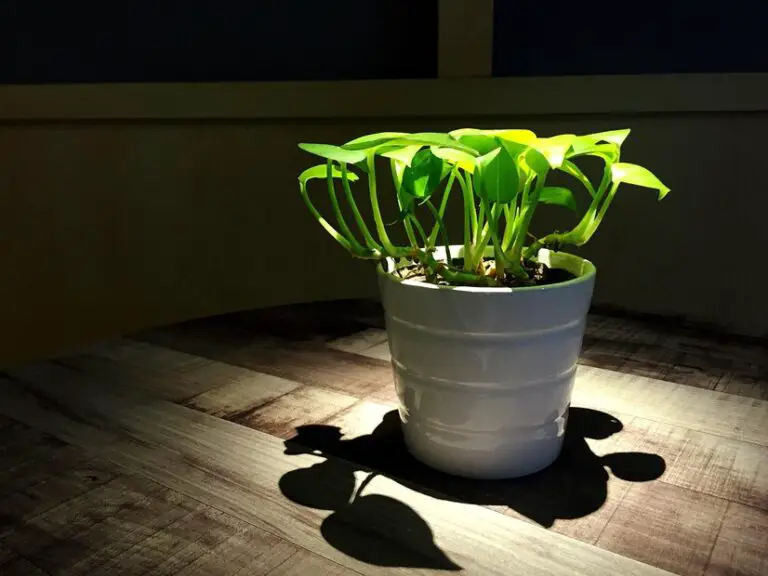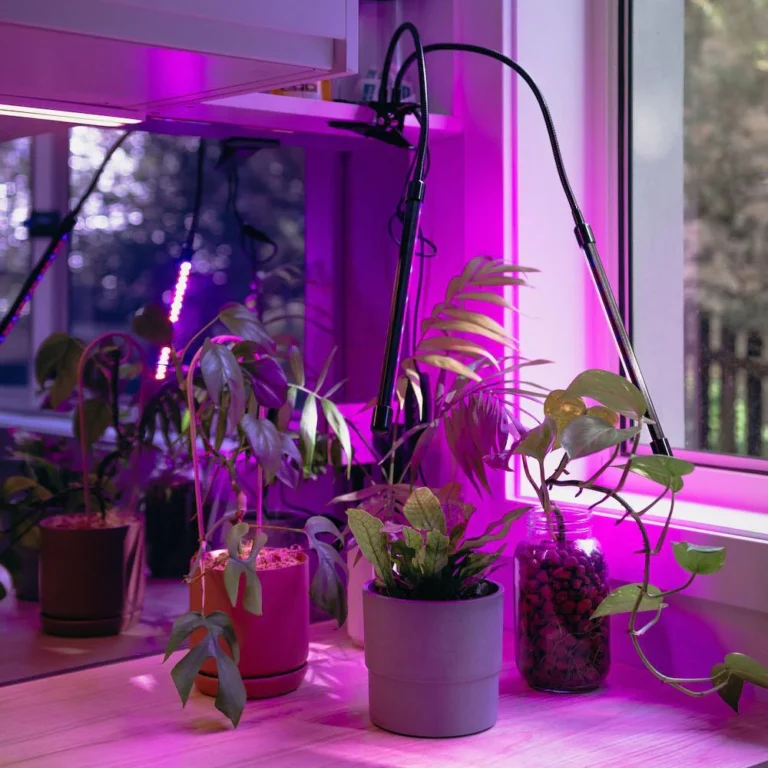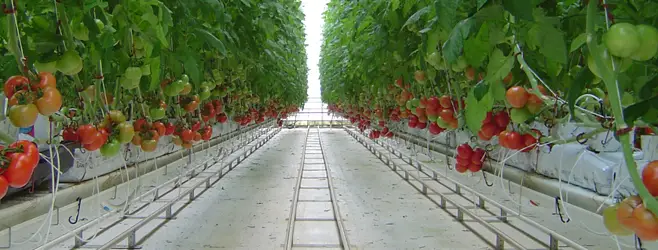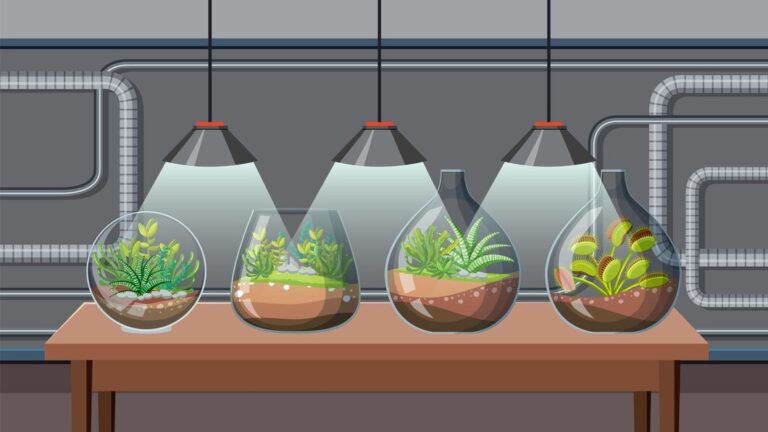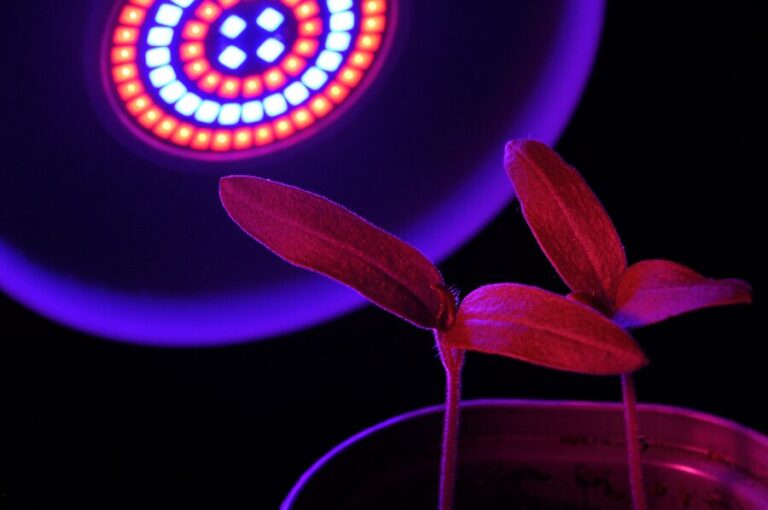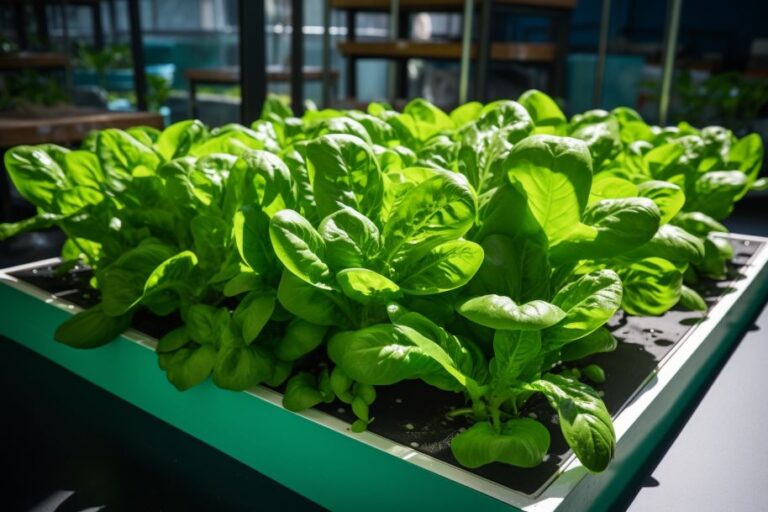Indoor Seedling Growth Boost with Optimized Lighting Solutions
Table of Contents
The Importance of Lighting for Indoor Seedling Growth
Proper lighting is crucial for the successful growth of indoor seedlings. As photosynthetic organisms, plants rely on light as their primary energy source, and the quality and intensity of light play a significant role in their overall development. When seedlings receive inadequate light, they can become weak, leggy, and have a poor root system. Insufficient lighting can also lead to stunted growth and an increased susceptibility to pests and diseases.
Adequate lighting ensures that seedlings receive the necessary amount of energy to carry out photosynthesis effectively. This process allows plants to convert light energy into chemical energy, producing carbohydrates that are vital for growth. Furthermore, light also influences other crucial plant processes, such as the regulation of hormones, photoperiodic responses, and the development of chlorophyll. Therefore, providing the right balance of light spectrum, intensity, duration, and timing is essential for promoting healthy and vigorous seedling growth.
Inadequate lighting is a common challenge faced by indoor gardeners. Many rely on natural light, but this can be limited, especially during the winter months or in locations with limited sunlight. Consequently, artificial lighting becomes an essential tool for supplementing and enhancing natural light. Various lighting options are available to growers, such as fluorescent, high-intensity discharge (HID), and Light Emitting Diode (LED) lights. Selecting the appropriate light source for indoor seedlings involves considering factors such as efficiency, spectrum, intensity, and cost-effectiveness.
References:
– Jones, C. M. (2019). Lighting and the Growth of Plants. In Hydroponics: A Practical Guide for the Soilless Grower (pp. 94-105). CRC Press.
– Nelson, P. V. (2002). Greenhouse lighting. In Plant science: Growth, development, and utilization of cultivated plants (pp. 216-228). Pearson Education.
– Proper lighting is crucial for the successful growth of indoor seedlings.
– Inadequate lighting can lead to weak, leggy seedlings with poor root systems.
– Insufficient lighting can result in stunted growth and increased susceptibility to pests and diseases.
– Adequate lighting ensures that seedlings receive the necessary energy for photosynthesis and carbohydrate production.
– Light also influences hormone regulation, photoperiodic responses, and chlorophyll development in plants.
– Artificial lighting becomes essential when natural light is limited, such as during winter or in locations with limited sunlight.
– Various options are available for artificial lighting, including fluorescent, HID, and LED lights.
– Factors like efficiency, spectrum, intensity, and cost-effectiveness should be considered when selecting a light source for indoor seedlings.

Understanding the Light Spectrum for Seedling Development
Light plays a crucial role in the development of seedlings. Understanding the light spectrum is essential for optimizing their growth and ensuring healthy plant development. The light spectrum refers to the range of wavelengths emitted by a light source, and different wavelengths have varying effects on seedling growth.
Blue light, with wavelengths between 400 to 500 nanometers, is essential for promoting compact growth and strong stems. It stimulates chlorophyll production, which is necessary for photosynthesis and healthy foliage. On the other hand, red light, with wavelengths between 600 to 700 nanometers, is crucial for encouraging seedling elongation and flowering. It affects stem length and internode spacing, ensuring proper plant structure. By manipulating the ratio of blue to red light, growers can regulate the growth rate and overall quality of seedlings.
In addition to blue and red light, other colors within the light spectrum also play a role in seedling development. For example, green light, which falls in the 500 to 600 nanometer range, is less effective for photosynthesis but can still contribute to overall growth. It helps in the development of chloroplasts and can enhance the color and appearance of seedlings. Ultraviolet (UV) light, with wavelengths below 400 nanometers, can stimulate the production of secondary metabolites in plants, leading to improved nutrient content and pest resistance.
Creating a well-balanced light spectrum is crucial for maximizing seedling growth. By providing the right combination and intensity of blue, red, and other colors, growers can optimize photosynthesis, regulate growth rates, and enhance the overall quality of their seedlings. However, it’s important to note that different plant species have varying light requirements, so it’s essential to research and understand the specific needs of the seeds or plants you are growing to ensure successful development.
• Blue light (400-500 nanometers) promotes compact growth and strong stems
• Red light (600-700 nanometers) encourages seedling elongation and flowering
• Manipulating the ratio of blue to red light regulates growth rate and quality
• Green light (500-600 nanometers) contributes to overall growth and enhances appearance
• Ultraviolet (UV) light stimulates production of secondary metabolites for improved nutrient content and pest resistance
• Well-balanced light spectrum maximizes seedling growth by optimizing photosynthesis, regulating growth rates, and enhancing quality
• Different plant species have varying light requirements, so it’s important to research specific needs
Understanding the light spectrum’s impact on seedling development is crucial for successful plant growth. Let’s create a table summarizing the key aspects of light quality during different stages of seedling development:
| Stage | Ideal Light Spectrum | Role in Development |
|---|---|---|
| Seed Germination | Higher ratio of blue light | Facilitates germination and promotes early root growth. |
| Seedling De-etiolation | Balanced ratio of blue and red light | Helps seedlings transition from etiolated (elongated) growth in darkness to normal growth in light. |
| Seedling Establishment | Higher ratio of red light | Supports overall growth, leaf development, and prepares seedlings for further stages. |
These insights can guide production planning in plant factories and contribute to better crop quality. Light quality plays a pivotal role in photomorphogenesis, impacting various aspects of plant development.
How Photoperiod and Light Intensity Affect Seedling Growth
Light plays a crucial role in the growth and development of seedlings. Two key factors that significantly influence seedling growth are photoperiod and light intensity. Photoperiod refers to the duration of light exposure, while light intensity refers to the brightness or strength of the light source.
The photoperiod required by seedlings varies depending on the plant species. Some plants require longer periods of light exposure, while others thrive with shorter durations. Understanding the specific photoperiod needs of your seedlings is essential for promoting healthy growth. By providing the correct amount of light exposure, you can mimic natural conditions and trigger necessary physiological processes such as photosynthesis and flowering. Additionally, incorrect photoperiods can disrupt plant development, leading to stunted growth or flowering abnormalities.
In addition to photoperiod, light intensity also plays a vital role in seedling growth. The proper intensity of light is critical for enabling the efficient conversion of light energy into chemical energy through photosynthesis. Insufficient light intensity can lead to weak and leggy seedlings, as they stretch towards the light source in an effort to receive adequate energy. On the other hand, excessive light intensity can cause damage to the seedlings due to excessive heat or radiation exposure. Finding the right balance of light intensity is crucial for optimizing seedling growth and ensuring their overall health and vitality.
• Different plant species have varying photoperiod requirements for optimal growth
• Understanding the specific photoperiod needs of your seedlings is essential for promoting healthy growth
• Incorrect photoperiods can disrupt plant development, leading to stunted growth or flowering abnormalities
• Providing the correct amount of light exposure mimics natural conditions and triggers necessary physiological processes such as photosynthesis and flowering
• Light intensity is also important for seedling growth
• The proper intensity of light enables efficient conversion of light energy into chemical energy through photosynthesis
• Insufficient light intensity can lead to weak and leggy seedlings as they stretch towards the light source for adequate energy
• Excessive light intensity can cause damage to seedlings due to excessive heat or radiation exposure
Finding the right balance of light intensity is crucial for optimizing seedling growth and ensuring their overall health and vitality
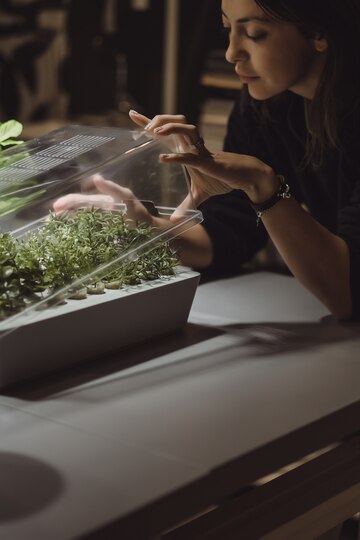
Choosing the Right Light Source for Indoor Seedlings
When it comes to choosing the right light source for your indoor seedlings, there are several factors to consider. One of the most important considerations is the light spectrum provided by the light source. Different plants have specific light spectrum requirements for optimal growth and development. For instance, blue light is crucial for promoting leaf and stem growth, while red light is essential for stimulating flowering and fruiting. Therefore, it is recommended to select a light source that provides a balanced spectrum of both blue and red light to meet the diverse needs of your seedlings.
Another crucial factor to consider is the light intensity of the source. Light intensity directly affects the rate of photosynthesis, which is essential for plant growth. Insufficient light intensity can result in weak and leggy seedlings, while excessive light intensity can lead to stunted growth or leaf burn. It is recommended to choose a light source with adjustable intensity settings or utilize reflective materials to control and optimize light distribution in your seedling environment. By carefully considering the light spectrum and intensity, you can select a light source that will provide your indoor seedlings with the optimal conditions for healthy and vigorous growth.
• Consider the light spectrum provided by the light source
– Different plants have specific light spectrum requirements for growth and development
– Blue light promotes leaf and stem growth, while red light stimulates flowering and fruiting
• Select a light source that provides a balanced spectrum of blue and red light
– This will meet the diverse needs of your seedlings
• Take into account the light intensity of the source
– Light intensity directly affects photosynthesis and plant growth
– Insufficient intensity can result in weak seedlings, while excessive intensity can lead to stunted growth or leaf burn
• Choose a light source with adjustable intensity settings or utilize reflective materials
to control and optimize light distribution in your seedling environment
By carefully considering these factors, you can choose the right light source for indoor seedlings that will provide optimal conditions for healthy and vigorous growth.
Comparing Different Lighting Options for Seedling Growth
When it comes to providing the best lighting for seedling growth, there are several different options to consider. Each lighting option has its own set of advantages and disadvantages, so it’s important to understand the differences before making a decision.
One popular choice for indoor seedling growth is fluorescent lights. These lights are affordable, energy-efficient, and widely available. They emit a cool, white light that is suitable for most seedlings. Fluorescent lights also produce less heat, reducing the risk of damaging delicate seedlings. However, fluorescent lights may not be as effective for larger, more mature plants, as they do not provide as much intensity or the full spectrum of light that plants need for optimal growth.
Another option to consider is high-intensity discharge (HID) lights, specifically metal halide (MH) and high-pressure sodium (HPS) lights. MH lights emit a bluish-white light that is ideal for promoting vegetative growth, while HPS lights emit a reddish-orange light that is better for flowering and fruiting stages. HID lights are known for their high light output and efficiency, making them a common choice for professional growers. However, they can be expensive to purchase and operate, and the intense heat they produce may require additional cooling measures.
• LED lights are another popular choice for seedling growth. They are energy-efficient and have a long lifespan, making them cost-effective in the long run. LED lights also provide a full spectrum of light that can be customized to meet the specific needs of different plants at various stages of growth. However, they can be more expensive upfront compared to other options.
• Incandescent lights, although widely available and inexpensive, are not recommended for seedling growth. They emit a lot of heat and produce a limited spectrum of light that may not be sufficient for optimal plant development.
• Natural sunlight is always an option for seedling growth if you have access to a sunny location or greenhouse. Sunlight provides the full spectrum of light needed by plants and is free. However, it may not always be available or consistent throughout the year, which can affect plant growth.
• When choosing lighting options for seedlings, it’s important to consider factors such as the type of plant being grown, its stage of growth (vegetative or flowering), energy efficiency requirements, budget constraints, and space availability.
Certainly! Let’s create a table comparing different lighting options for seedling growth. The choice of light spectrum significantly impacts seedling development. Here’s a concise summary:
| Lighting Option | Ideal Spectrum | Role in Seedling Growth |
|---|---|---|
| Fluorescent Tubes | Balanced blue and red wavelengths | Cost-effective, suitable for general seedling growth. |
| LED Grow Lights | Customizable spectrum (blue, red, etc.) | Energy-efficient, precise control, promotes specific growth stages (e.g., vegetative or flowering). |
| High-Intensity Discharge (HID) Lamps | Broad spectrum (including UV) | Intense light, good for mature plants, but excessive heat may affect seedlings. |
| Natural Sunlight | Full spectrum (including UV) | Free, provides a complete range of wavelengths, but less control indoors. |
Remember that the choice of lighting depends on factors like cost, energy efficiency, and growth stage. Each option has its advantages and trade-offs.
In conclusion, there are several lighting options available for seedling growth with their own advantages and disadvantages. Fluorescent lights offer affordability and energy efficiency but may lack intensity for larger plants. HID lights provide high light output but come with higher costs and additional cooling needs. LED lights offer customization but can be more expensive upfront. Incandescent lights should generally be avoided due to their heat production and limited light spectrum.
Natural sunlight remains an excellent option when accessible consistently throughout the year.
Consideration should be given to factors like plant type/stage/energy efficiency/budget/space availability before deciding on a lighting option
The Benefits of LED Lights for Indoor Seedlings
LED lights have become increasingly popular among indoor gardeners and seedling enthusiasts, and for good reason. These lights provide numerous benefits for the growth and development of indoor seedlings.
One major advantage of LED lights is their energy efficiency. LED lights consume significantly less electricity compared to traditional lighting options such as fluorescent or incandescent lights. This not only helps reduce energy costs but also minimizes the environmental impact of indoor gardening. LED lights can provide the same level of intensity as other light sources while using up to 80% less energy. This makes them a cost-effective and sustainable choice for indoor seedling growth.
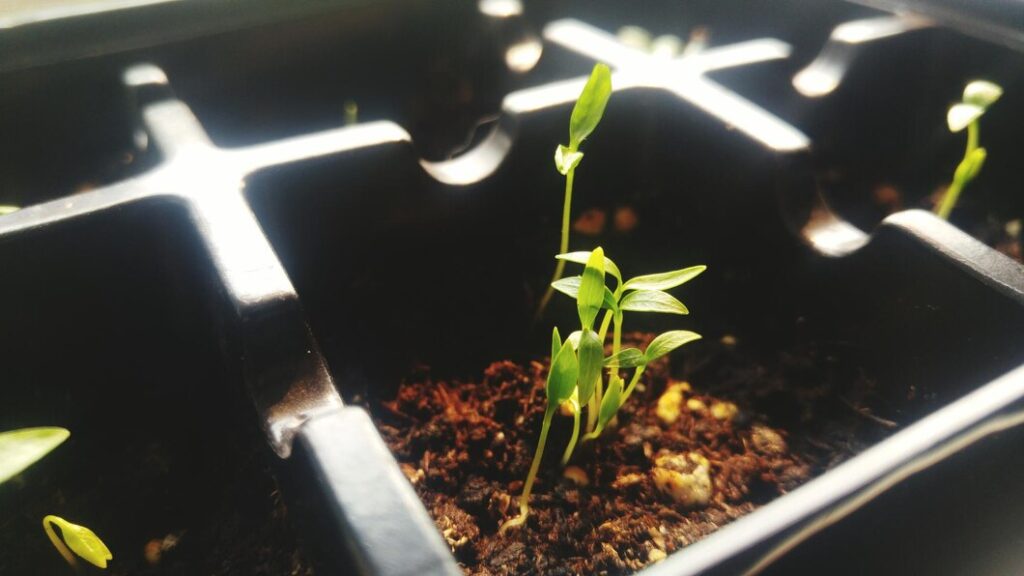
In addition to their energy efficiency, LED lights also offer a more tailored and precise light spectrum. Unlike other lighting options, LED lights can be designed to emit specific wavelengths of light that are most beneficial for seedling growth. For example, blue and red wavelengths are essential for photosynthesis and chlorophyll production, which are critical processes in the early stages of seedling development. LED lights can be customized to provide the optimal combination of blue and red light, maximizing seedling growth potential. This targeted light spectrum ensures that seedlings receive the exact amount and quality of light they need for healthy and robust growth. With LED lights, indoor gardeners have greater control over the growth and development of their seedlings, ultimately leading to higher success rates and stronger plants.
• LED lights consume significantly less electricity compared to traditional lighting options such as fluorescent or incandescent lights.
• LED lights can provide the same level of intensity as other light sources while using up to 80% less energy.
• This makes them a cost-effective and sustainable choice for indoor seedling growth.
• LED lights can be designed to emit specific wavelengths of light that are most beneficial for seedling growth.
• Blue and red wavelengths are essential for photosynthesis and chlorophyll production, critical processes in the early stages of seedling development.
• LED lights can be customized to provide the optimal combination of blue and red light, maximizing seedling growth potential.
• This targeted light spectrum ensures that seedlings receive the exact amount and quality of light they need for healthy and robust growth.
• With LED lights, indoor gardeners have greater control over the growth and development of their seedlings.
• This ultimately leads to higher success rates and stronger plants.
Tips for Properly Positioning Grow Lights to Maximize Growth
Proper positioning of grow lights is crucial for maximizing growth and optimizing the health of indoor seedlings. When it comes to positioning grow lights, there are a few key factors to consider.
Firstly, it is important to ensure that the lights are positioned at an appropriate height above the seedlings. If the lights are placed too close, they can cause heat stress or even burn the delicate seedlings. On the other hand, if the lights are too far away, they may not provide enough intensity to support healthy growth. A general guideline is to position the lights about 6 to 12 inches above the seedlings, but this can vary depending on the specific requirements of the plant species.
In addition to height, the angle of the lights also plays a role in maximizing growth. Ideally, the lights should be positioned at a slight angle, directed towards the plants rather than directly above them. This helps to ensure that the light is evenly distributed and reaches all parts of the seedlings, promoting uniform growth and preventing the plants from stretching towards the light source.
Furthermore, it is crucial to regularly check and adjust the positioning of the lights as the seedlings grow. As the plants develop and their canopy expands, the lights may need to be raised to maintain the appropriate distance. This will prevent the seedlings from getting too close to the lights, which can lead to issues such as light burn or stunted growth.
By carefully considering the height, angle, and regular adjustment of grow lights, gardening enthusiasts can create an optimal lighting environment for their indoor seedlings. This attention to positioning will help to maximize growth, promote healthy development, and set the stage for successful gardening endeavors.
• Position the grow lights at an appropriate height above the seedlings, typically 6 to 12 inches.
• Avoid placing the lights too close to prevent heat stress or burning of delicate seedlings.
• Ensure the lights are not too far away to provide enough intensity for healthy growth.
• Angle the lights slightly towards the plants for even distribution and uniform growth.
• Regularly check and adjust the positioning of the lights as seedlings grow and canopy expands.
Utilizing Reflective Surfaces to Optimize Light Distribution
Reflective surfaces can play a crucial role in optimizing light distribution for indoor seedlings. These surfaces help redirect and diffuse light, ensuring that it reaches all areas of the seedling tray or growing space. By bouncing the light back onto the plants, reflective surfaces can increase overall light absorption and minimize wasted energy.
One effective option for maximizing light distribution is the use of Mylar or reflective films. These highly reflective materials have a mirrored surface that reflects light back onto the plants, helping to create a more uniform lighting environment. Growers can attach Mylar sheets or reflective films to the walls, ceiling, or even the insides of grow tents or cabinets to enhance light distribution. Be sure to secure the reflective surface tightly to avoid light leaks and reduce the risk of fire hazard.
Additionally, white-painted surfaces can also be used as reflective surfaces. The white color reflects a significant amount of light back onto the plants, especially when placed strategically in areas where light penetration may be limited. This method can be used in combination with other lighting techniques, such as grow lights or natural sunlight, to optimize light distribution throughout the entire seedling tray or growing space.
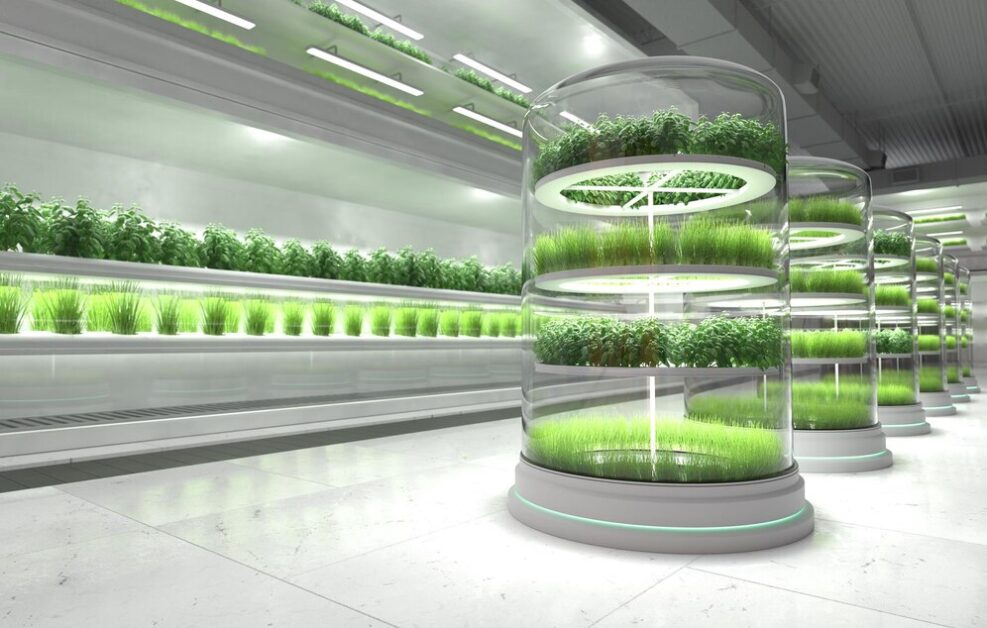
In conclusion, utilizing reflective surfaces, such as Mylar sheets or white-painted surfaces, can greatly enhance light distribution for indoor seedlings. These surfaces help redirect and diffuse light, ensuring that every plant receives an optimal amount of illumination. By incorporating reflective surfaces into your indoor gardening setup, you can create a more efficient and effective environment for seedling growth.
• Reflective surfaces redirect and diffuse light, ensuring it reaches all areas of the seedling tray or growing space.
• Mylar or reflective films can be attached to walls, ceiling, or inside grow tents to enhance light distribution.
• Secure the reflective surface tightly to avoid light leaks and reduce fire hazard.
• White-painted surfaces reflect a significant amount of light back onto plants, especially in areas with limited light penetration.
• Combining reflective surfaces with other lighting techniques optimizes light distribution throughout the entire seedling tray or growing space.
The Role of Light Duration and Timing in Seedling Growth
Light duration and timing play a crucial role in the growth and development of seedlings. Properly managing these factors can significantly impact the overall health and strength of your indoor seedlings.
Firstly, understanding the natural rhythm of plants and their need for both light and darkness is essential. Most seedlings require around 12 to 16 hours of light per day for optimal growth. This period should consist of both the visible spectrum and specific wavelengths that are beneficial for seedling development. Similarly, a period of darkness is equally important as it allows the plants to rest and undergo vital physiological processes such as cell division and elongation. Providing the ideal duration of light and darkness ensures that seedlings receive the necessary energy for growth and also allows them to efficiently metabolize and utilize nutrients.
In addition to duration, timing of light exposure is another critical aspect. Consistency is key when it comes to providing light to seedlings. Ensuring that the intensity and timing of light exposure remain consistent day after day sends important signals to the plants, helping them establish a healthy circadian rhythm. Deviations in light timing can disrupt this rhythm and result in stunted growth or other adverse effects. Therefore, it is important to provide a consistent light schedule to allow seedlings to establish regular patterns of growth and development.
Overall, understanding the role of light duration and timing in seedling growth is vital for successful indoor gardening. By providing the right balance of light and darkness, and by maintaining a consistent light schedule, you can help your seedlings thrive and prepare them for transplanting and further growth stages.
• Most seedlings require around 12 to 16 hours of light per day for optimal growth
• Seedlings need both the visible spectrum and specific wavelengths beneficial for development
• A period of darkness is important for rest and vital physiological processes
• Providing the ideal duration of light and darkness ensures energy for growth and efficient nutrient utilization
• Consistency in timing and intensity of light exposure helps establish a healthy circadian rhythm
• Deviations in light timing can result in stunted growth or adverse effects
• Maintaining a consistent light schedule allows seedlings to establish regular patterns of growth
• Understanding the role of light duration and timing is vital for successful indoor gardening.
The Effect of Light Color on Seedling Development
The color of light plays a crucial role in the development of seedlings. Different colors within the light spectrum have specific wavelengths that can influence various aspects of growth and development. When it comes to seedling development, blue and red light are particularly important.
Blue light is essential for promoting vegetative growth in seedlings. It stimulates the production of chlorophyll, which is responsible for the green color in plants. Additionally, blue light regulates the opening and closing of stomata, the tiny pores on the surface of leaves that facilitate the exchange of gases. This regulation helps optimize photosynthesis, ensuring that seedlings can efficiently convert light energy into sugars for growth.
On the other hand, red light is crucial for promoting flowering and fruiting in seedlings. It is responsible for triggering the flowering hormone, which signals the plant to transition from the vegetative stage to the reproductive stage. Without adequate red light, seedlings may fail to develop blossoms or produce fruit. Therefore, it is vital to provide a balanced combination of blue and red light to ensure optimal seedling development.
By understanding the effect of light color on seedling development, gardeners can tailor their indoor lighting setups to meet the specific needs of their plants. Whether it’s using LED grow lights that emit a specific spectrum or adjusting the distance and duration of lighting, providing the right light color is crucial for promoting healthy growth in seedlings. However, it’s important to note that different plant species may have different light color preferences, so it’s always beneficial to consult plant-specific guidelines or seek advice from a gardening expert for optimal results.
• Blue light stimulates the production of chlorophyll, promoting vegetative growth in seedlings.
• Blue light regulates the opening and closing of stomata, optimizing photosynthesis for efficient energy conversion.
• Red light triggers the flowering hormone, promoting flowering and fruiting in seedlings.
• Without adequate red light, seedlings may fail to develop blossoms or produce fruit.
• A balanced combination of blue and red light is essential for optimal seedling development.
• Gardeners can tailor their indoor lighting setups to meet specific plant needs by using LED grow lights or adjusting distance and duration of lighting.
• Different plant species may have different light color preferences, so consulting plant-specific guidelines or seeking advice from a gardening expert is beneficial.
Supplementing Natural Light with Artificial Lighting for Optimal Growth
Supplementing natural light with artificial lighting is a crucial aspect of indoor seedling growth for gardening enthusiasts. While natural light is ideal for plant development, it may not always provide the optimum intensity or duration needed for healthy seedling growth. Artificial lighting, when used appropriately, can help bridge this gap and ensure optimal growth conditions for your seedlings.
One key benefit of using artificial lights is the ability to provide consistent and controllable light intensity. Different plant species have specific light requirements, and artificial lighting allows you to meet those requirements with precision. By using specialized grow lights, such as LED or fluorescent lamps, you can provide the necessary light spectrum and intensity needed to promote healthy growth throughout the seedling stage.
Another advantage of supplementing natural light with artificial lighting is the flexibility it offers in terms of extending the photoperiod. Natural daylight hours may be limited, especially during shorter winter days. By incorporating artificial lighting, you can extend the duration of light exposure for your seedlings, ensuring they receive the sufficient light they need for optimal growth. This is particularly important for plants that require long-day or short-day photoperiods to trigger specific growth responses.
In the next paragraphs, we will delve deeper into the different types of artificial lighting options available for indoor seedling growth and discuss the benefits and considerations of each. Additionally, we will explore the importance of proper positioning and light distribution, as well as the effects of light duration and timing on seedling development. Stay tuned for an informative and comprehensive guide on how to effectively utilize artificial lighting to maximize the growth of your indoor seedlings.
• Artificial lighting provides consistent and controllable light intensity for optimal growth
• Specialized grow lights like LED or fluorescent lamps can meet specific light requirements of different plant species
• Supplementing natural light with artificial lighting allows for extending the photoperiod, especially during shorter winter days
• Extended duration of light exposure ensures seedlings receive sufficient light for healthy growth
• Important for plants that require long-day or short-day photoperiods to trigger specific growth responses
Common Mistakes to Avoid in Indoor Seedling Lighting
One of the most common mistakes to avoid when it comes to indoor seedling lighting is improper placement of grow lights. Many gardeners make the error of either placing the lights too far away or too close to the seedlings. When the lights are too far away, the seedlings do not receive enough light intensity, resulting in weak and spindly growth. On the other hand, placing the lights too close can cause excessive heat and burn the delicate seedlings. It is vital to find the right balance by following the manufacturer’s recommendations or consulting a lighting expert.
Another mistake to avoid is not providing enough darkness for the seedlings. Just like humans, plants also need a period of darkness to complete their growth cycle. Many gardeners keep their grow lights on 24/7, thinking that more light equals faster growth. However, this can disrupt the seedlings’ natural biological rhythm and lead to stunted growth. It is crucial to give the seedlings a break by turning off the lights for at least 6-8 hours a day. This allows them to rest and promotes healthy development.
• Improper placement of grow lights:
– Placing lights too far away results in weak and spindly growth.
– Placing lights too close can cause excessive heat and burn the seedlings.
– Follow manufacturer’s recommendations or consult a lighting expert for proper placement.
• Not providing enough darkness for the seedlings:
– Plants need a period of darkness to complete their growth cycle.
– Keeping grow lights on 24/7 disrupts the seedlings’ natural biological rhythm.
– Turn off the lights for at least 6-8 hours a day to allow them to rest and promote healthy development.
Managing Heat and Humidity Levels in Indoor Seedling Environments
Proper management of heat and humidity levels is crucial for ensuring the healthy growth of indoor seedlings. It is important to understand that seedlings have specific temperature and humidity requirements in order to thrive.
Maintaining a consistent temperature is key, as fluctuations can stress the seedlings and hinder their growth. Ideally, the temperature for seedling growth should be between 65°F and 75°F (18°C – 24°C). Too high of a temperature can lead to wilting, while too low of a temperature can slow down growth. Using a thermometer can help you monitor and adjust the temperature as needed.
In addition to temperature, humidity also plays a vital role in seedling development. In general, seedlings require a humidity level of around 50% to 60% for optimal growth. High humidity can contribute to the development of fungal diseases, while low humidity can result in dehydration of the seedlings. Using a hygrometer, you can measure the humidity levels and make adjustments accordingly. To increase humidity, you can use a humidity tray filled with water or a humidifier. On the other hand, if the humidity is too high, you can use ventilation or a dehumidifier to lower it.
By carefully managing both heat and humidity levels, you can provide an ideal environment for your indoor seedlings, setting them up for healthy growth and ensuring their successful transition to the outdoor garden.
• Maintaining a consistent temperature is crucial for healthy seedling growth
• Fluctuations in temperature can stress seedlings and hinder their growth
• Ideal temperature range for seedling growth is between 65°F and 75°F (18°C – 24°C)
• Too high of a temperature can cause wilting, while too low can slow down growth
• Use a thermometer to monitor and adjust the temperature as needed
• Humidity levels also play a vital role in seedling development
• Seedlings require around 50% to 60% humidity for optimal growth
• High humidity can lead to fungal diseases, while low humidity causes dehydration
• Use a hygrometer to measure humidity levels and make adjustments accordingly
To increase humidity:
– Use a humidity tray filled with water or a humidifier
To decrease humidity:
– Utilize ventilation or use a dehumidifier
By carefully managing heat and humidity levels, you create an ideal environment for indoor seedlings
This ensures healthy growth and successful transition to the outdoor garden.
How to Create a Lighting Schedule for Indoor Seedlings
Creating a lighting schedule for indoor seedlings is crucial to ensuring their healthy growth and development. A well-designed lighting schedule provides the right amount of light at the right times, mimicking the natural cycle that seedlings would experience outdoors. This helps to optimize photosynthesis and promote strong, vigorous growth.
To create an effective lighting schedule, it is important to consider both the duration and intensity of light. Most seedlings require about 14-16 hours of light per day, simulating a longer day in the growing season. However, this may vary depending on the specific plant species and its light requirements. It is recommended to research the specific light needs of the seedlings you are growing to determine the optimal lighting duration.
In addition to duration, light intensity is another crucial factor to consider. Seedlings require enough light to fuel their photosynthetic processes, but excessive light intensity can lead to stress and damage. It is recommended to provide seedlings with a light intensity of 1000-2000 lumens per square foot, and adjust as necessary based on the seedling’s response.
A good approach to creating a lighting schedule is to use a timer system that automatically turns the lights on and off at the desired times. This ensures consistency and eliminates the need for manual adjustments. When setting up your lighting schedule, it’s also important to consider the plant’s growth stage. For instance, seedlings may require higher light intensity during their early stages of growth compared to when they reach the vegetative or flowering stages.
When designing your lighting schedule, it is important to prioritize energy efficiency and cost-effectiveness. Consider using energy-efficient lighting options such as LED grow lights, which provide a full spectrum of light and consume less energy compared to traditional lighting sources. Additionally, monitoring the temperature and humidity levels in your growing environment is essential, as high heat can negatively impact seedling growth.
Overall, creating a lighting schedule for indoor seedlings requires careful consideration of duration, intensity, and the specific needs of the plants. By providing the right amount and quality of light, you can create optimal growing conditions for your seedlings, enabling them to thrive and develop into healthy, robust plants.
• A well-designed lighting schedule provides the right amount of light at the right times
• Mimicking the natural cycle that seedlings would experience outdoors is important
• Most seedlings require about 14-16 hours of light per day, but this may vary depending on the specific plant species and its light requirements
• It is recommended to research the specific light needs of your seedlings to determine optimal lighting duration
• Light intensity should be considered as excessive intensity can lead to stress and damage for seedlings
• Seedlings generally require a light intensity of 1000-2000 lumens per square foot, adjusting as necessary based on their response
• Using a timer system for lights ensures consistency and eliminates manual adjustments
• Consider higher light intensity during early growth stages compared to later vegetative or flowering stages
• Prioritize energy efficiency by using LED grow lights which consume less energy than traditional lighting sources
• Monitoring temperature and humidity levels in growing environments is essential for healthy growth.
Understanding the Role of Darkness in Seedling Growth
The role of darkness in seedling growth is often overlooked, but it is essential for the overall development and health of the young plants. While light is crucial for photosynthesis and energy production, darkness plays a critical role in several physiological processes, including the regulation of hormone levels and the initiation of certain growth patterns.
One key aspect of darkness is its influence on the plant’s circadian rhythm. Just like humans, plants have an internal clock that helps regulate various biological functions. During the day, when exposed to light, plants photosynthesize and produce energy. However, during the night, when darkness prevails, the plants undergo a different set of processes. In the absence of light, plants release a hormone called auxin, which promotes elongation growth. This is why some plants may exhibit leggy or stretched-out growth if they do not receive enough darkness. Additionally, darkness also influences the production of other hormones that play crucial roles in seedling growth, such as gibberellins and cytokinins.
Understanding the importance of darkness in seedling growth can help gardeners optimize their growing conditions. Providing the right balance of light and darkness is crucial for the overall health and development of seedlings. By incorporating periods of darkness into the daily light cycle, gardeners can encourage proper growth patterns and prevent issues like leggy or weak stems. Monitoring and adjusting light levels, along with the duration of darkness, can result in healthier, sturdier seedlings that are better prepared for transplanting and further growth.
In the next section, we will explore how to effectively monitor and adjust light levels for healthy seedlings, ensuring they receive the optimal amount of both light and darkness for their growth and development.
• Darkness plays a critical role in several physiological processes during seedling growth.
• Darkness influences the plant’s circadian rhythm, similar to humans.
• In the absence of light, plants release auxin hormone for elongation growth.
• Darkness also affects the production of gibberellins and cytokinins hormones.
• Understanding darkness’ importance helps optimize growing conditions for seedlings.
• Balancing light and darkness promotes proper growth patterns and prevents issues like leggy stems.
• Monitoring and adjusting light levels ensures healthier, sturdier seedlings.
Monitoring and Adjusting Light Levels for Healthy Seedlings
Accurately monitoring and adjusting light levels is crucial for ensuring the healthy growth of indoor seedlings. As seedlings rely on light for photosynthesis, understanding their specific light requirements is essential. Light intensity, duration, and quality all play a significant role in seedling development.
To begin, it is important to regularly measure light levels using a light meter or lux meter. This device will provide you with precise information about the intensity of light reaching your seedlings. Ideally, most vegetable and flower seedlings require around 10,000 to 12,000 lux for optimal growth. However, different species may have specific light intensity preferences, so it is advisable to refer to reputable sources or consult with gardening experts to ensure that you are providing the appropriate levels for your particular seedlings.
• Regularly measure light levels using a light meter or lux meter
• Most vegetable and flower seedlings require around 10,000 to 12,000 lux for optimal growth
• Different species may have specific light intensity preferences
• Refer to reputable sources or consult with gardening experts for appropriate light levels
In addition to monitoring the intensity of light, it is also crucial to consider the duration of exposure. Seedlings generally require 14-16 hours of continuous light per day during their early stages. This extended period allows them to maximize photosynthesis and promote healthy growth. However, it is important to note that some seedlings may benefit from slightly shorter or longer durations depending on their specific needs. It is recommended to refer to plant-specific guidelines or seek advice from experienced gardeners when determining the ideal duration of light exposure.
Furthermore, understanding the quality of light is essential in ensuring healthy seedling development. Natural sunlight provides a full spectrum of wavelengths that are necessary for proper photosynthesis. When growing indoors, it is crucial to mimic this natural lighting as closely as possible by utilizing full-spectrum grow lights or LED lights specifically designed for plant growth. These lights emit a balanced combination of red and blue wavelengths that promote chlorophyll production and overall plant health.
To adjust the light levels effectively, consider positioning your grow lights at an appropriate distance from your seedlings. Placing them too close can result in excessive heat and potential damage, while placing them too far away may lead to insufficient lighting conditions. Aim for a distance where your seedlings receive adequate illumination without causing any harm.
Finally, regularly monitor your seedlings’ response to the adjusted lighting conditions. Observe their overall growth rate, leaf coloration, stem elongation, and any signs of stress such as wilting or yellowing leaves. Making small adjustments based on these observations will help ensure optimal lighting conditions throughout their growth cycle.
By accurately monitoring and adjusting light levels, you can provide your seedlings with the ideal conditions for healthy growth. Remember to measure light intensity, consider duration and quality of light, position grow lights appropriately, and regularly monitor seedling response. With these practices in place, you will be well on your way to cultivating strong and vibrant indoor seedlings.
Troubleshooting Common Lighting Issues for Indoor Seedlings
When it comes to indoor seedling growth, proper lighting is crucial for success. However, even with the best intentions and equipment, common lighting issues can arise that may hinder the development of your seedlings. It’s important to be aware of these issues and troubleshoot them promptly to ensure optimal growth.
One common issue is inadequate light intensity. Insufficient light can lead to weak and leggy seedlings as they stretch towards the limited light source. To address this, consider increasing the distance between the light source and seedlings, or using supplemental lighting to provide the necessary light intensity. Additionally, check that your light fixtures are positioned at the appropriate height and angle to evenly distribute light across the entire seedling tray.
Another common problem is uneven light distribution. Uneven lighting can result in uneven growth and development among seedlings. To rectify this issue, utilize reflective surfaces such as aluminum foil or reflective panels to bounce and scatter light, ensuring that all seedlings receive an equal amount of light. Regularly monitor and adjust the positioning of your light fixtures to maximize light distribution and minimize any shadowed areas.
By addressing common lighting issues promptly and effectively, you can ensure that your indoor seedlings receive the optimal light they need to thrive. With proper troubleshooting and adjustments, you’ll be well on your way to healthy and robust seedling growth.
– Inadequate light intensity can lead to weak and leggy seedlings
– Increase the distance between the light source and seedlings or use supplemental lighting
– Check that light fixtures are positioned at the appropriate height and angle for even distribution of light
– Uneven light distribution can cause uneven growth among seedlings
– Use reflective surfaces like aluminum foil or panels to bounce and scatter light
– Regularly monitor and adjust the positioning of your light fixtures to maximize light distribution
– Promptly address common lighting issues for optimal seedling growth
Please do watch video!
Why is lighting important for indoor seedling growth?
Lighting is essential for indoor seedling growth as it provides the energy they need for photosynthesis. Without proper lighting, seedlings may become weak, elongated, or fail to develop properly.
How does the light spectrum affect seedling development?
The light spectrum plays a crucial role in seedling development. Different wavelengths of light, such as red and blue, have specific effects on seedling growth, influencing aspects like stem elongation, leaf development, and root growth.
What is photoperiod, and how does it affect seedling growth?
Photoperiod refers to the duration of light and darkness in a 24-hour period. It affects seedling growth by influencing processes like flowering, germination, and overall plant development. Properly timed light and dark periods are crucial for healthy seedling growth.
How do I choose the right light source for indoor seedlings?
When selecting a light source, consider factors such as light intensity, spectrum, energy efficiency, and cost. LED lights are often a popular choice due to their versatility, energy efficiency, and ability to provide the necessary light spectrum for seedling growth.
What are the benefits of using LED lights for indoor seedlings?
LED lights offer numerous benefits for indoor seedlings. They produce less heat, consume less energy, and can be customized to provide the specific light spectrum required for optimal seedling growth. LED lights are also long-lasting and cost-effective in the long run.
How can I properly position grow lights to maximize seedling growth?
To maximize seedling growth, it is important to position grow lights at the appropriate distance from the seedlings. This distance can vary depending on the light intensity and the specific requirements of the seedlings. Generally, lights should be positioned close enough to provide sufficient light without causing heat stress or light burn.
How can I optimize light distribution for indoor seedlings?
Utilizing reflective surfaces around the grow area can help optimize light distribution. Reflective materials such as Mylar or aluminum foil can be used to redirect and diffuse light, ensuring that seedlings receive light from multiple angles and minimizing the occurrence of shaded areas.
How does light duration and timing impact seedling growth?
Light duration and timing play a crucial role in seedling growth. Providing the appropriate duration of light and darkness mimics natural day-night cycles and helps regulate processes like photosynthesis, growth, and flowering. Consistency in light duration and timing is essential for healthy seedling development.
What is the effect of light color on seedling development?
Different colors of light have different effects on seedling development. For example, blue light encourages leaf and stem growth, while red light promotes flowering and fruiting. Understanding the specific light requirements of your seedlings can guide you in choosing the right light color for optimal growth.
How can I supplement natural light with artificial lighting for seedling growth?
Supplementing natural light with artificial lighting is often necessary for indoor seedlings. By providing additional light during periods of low natural light, such as during winter or in shaded areas, you can ensure that seedlings receive the necessary light intensity and spectrum required for healthy growth.
What are common mistakes to avoid in indoor seedling lighting?
Common mistakes to avoid in indoor seedling lighting include using the wrong light spectrum, improper light positioning, inadequate light intensity, inconsistent light duration, and neglecting to monitor heat and humidity levels. These mistakes can hinder seedling growth and development.
How can I manage heat and humidity levels in indoor seedling environments?
To manage heat and humidity levels in indoor seedling environments, it is crucial to provide proper ventilation, maintain appropriate distances between lights and seedlings to avoid heat buildup, and use fans or humidifiers to regulate humidity levels based on the specific requirements of the seedlings.
How do I create a lighting schedule for indoor seedlings?
Creating a lighting schedule involves determining the optimal light duration and timing for your seedlings. Consider factors such as the specific light requirements of the seedlings, their growth stage, and any necessary adjustments due to natural light conditions. A consistent and well-planned lighting schedule is essential for healthy seedling growth.
What is the role of darkness in seedling growth?
Darkness is crucial for seedling growth as it allows for essential processes like respiration and recovery. Providing a period of uninterrupted darkness allows seedlings to rest, regulate their metabolic processes, and prepare for future growth.
How can I monitor and adjust light levels for healthy seedlings?
Regularly monitoring light levels can be done using light meters or by observing the growth and development of seedlings. Adjustments can be made by changing the light intensity, duration, or position to ensure that seedlings are receiving the optimal amount and quality of light for healthy growth.
What are some common lighting issues I may encounter with indoor seedlings?
Common lighting issues with indoor seedlings include inadequate light intensity, improper light spectrum, uneven light distribution, heat stress or light burn, inconsistent light duration, and insufficient monitoring of light levels. Identifying and troubleshooting these issues promptly can help ensure healthy seedling growth.

Nicole Burke is a dynamic writer at SouthElMonteHydroponics, fueled by her passion for horticulture and environmental sustainability. Armed with a degree in Environmental Science from a renowned institution, Nicole’s expertise lies in hydroponic gardening, organic farming, and biodiversity conservation. Her insatiable curiosity and love for nature drive her to explore innovative techniques in hydroponics, seeking to revolutionize the way we grow crops in urban environments. Nicole’s writing reflects her deep commitment to promoting eco-conscious practices and fostering a deeper connection between humans and the natural world. Through her engaging storytelling, she inspires others to embrace sustainable living and harness the power of hydroponics for a greener future.

